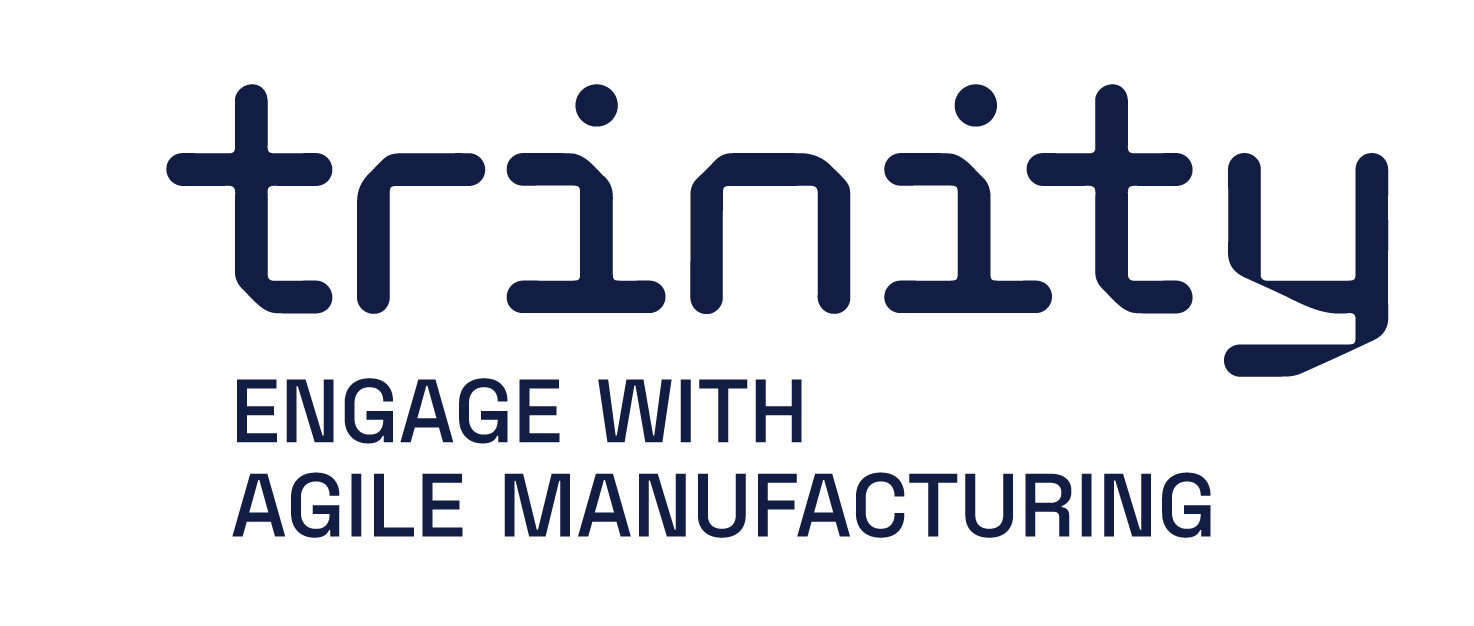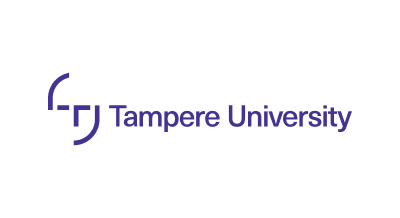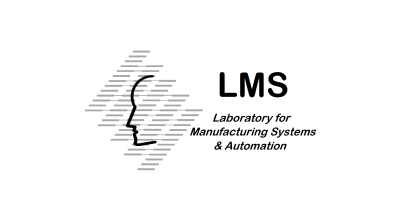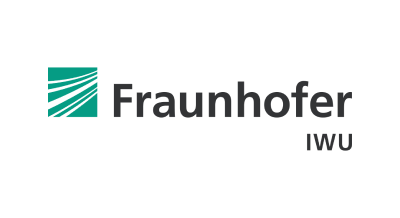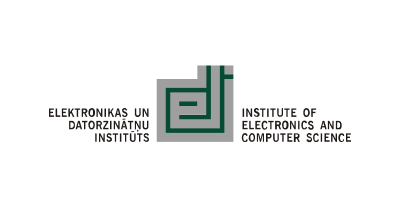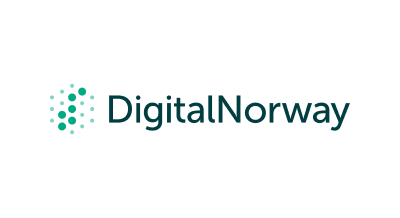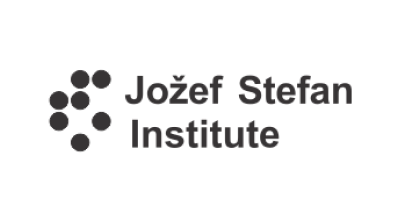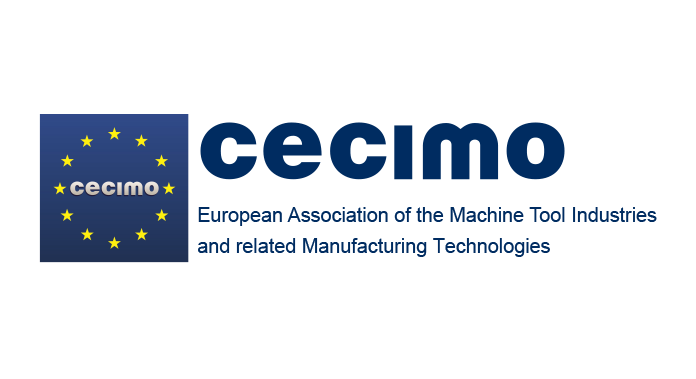Contact us
Find & contact us on any of the channels provided below!
Network management


About
Agility for production in Europe
The main objective of TRINITY was to create a network of multidisciplinary and synergistic local digital innovation hubs (DIHs) composed of research centers, companies, and university groups that covered a wide range of topics that could contribute to agile production. The focus was on advanced robotics as the driving force and digital tools, data privacy, and cybersecurity technologies to support the introduction of advanced robotic systems in production processes.
The result was a one-stop shop for methods and tools to achieve highly intelligent, agile, and reconfigurable production, which aimed to ensure Europe’s welfare in the future. The network started its operation by developing demonstrators in the areas of robotics that were identified as the most promising to advance agile production, such as collaborative robotics including sensory systems to ensure safety, effective user interfaces based on augmented reality and speech, reconfigurable robot workcells and peripheral equipment (fixtures, jigs, grippers, etc.), programming by demonstration, IoT, secure wireless networks, and more.
These demonstrators served as reference implementations for two rounds of open calls for application experiments, where companies with agile production needs and sound business plans were supported by TRINITY DIHs to advance their manufacturing processes. Besides technology-centered services, primarily laboratories with advanced robot technologies and know-how to develop innovative application experiments, the TRINITY network of DIHs also offered training and consulting services, including support for business planning and access to financing. Services of participating DIHs and dissemination of information to the wider public were provided through a digital access point that was developed in the project. Another important activity of the project was the preparation of a business plan to sustain the network after the end of the project funding.
TRINITY fact sheet at CORDIS database.
Public project deliverables
D1.1. Project Handbook
The TRINITY Project Handbook acts as reference source for all consortium members, providing information and links to further information where required. Additionally, it aims to provide standards and templates for all acting documents throughout the project where relevant. This includes project reports, deliverables, naming conventions, etc. The document will be updated throughout the project lifetime.
D1.2 Risk Assessment
The main objective of this document is to provide means and methods to analyse risks associated to the TRINITY project. Whilst the purpose of risk assessment includes the prevention of project related risks, and this should always be the goal, it will not always be achievable in practice. Where elimination of risks is not possible, the risks should be reduced and the residual risk controlled. At a later stage, as part of a review programme, such residual risk will be reassessed and the possibility of elimination of the risk, perhaps in the light of new knowledge, can be reconsidered.
The risk assessment will be structured and applied so as following:
- identify the problems or hazards created at work and evaluate the risks associated with thesehazards, to determine what measures they should take to prevent these;
- evaluate the risks in order to make the best-informed selection of counter measures
- check whether the measures in place are adequate;
- prioritise action if further measures are found to be necessary as a result of the assessment;
- in case of hazards relating to the specific use case demonstrations, demonstrate to themselves, the competent authorities, workers and their representatives that all factors pertinent to the work have been considered, and that an informed valid judgment has been made about the risks and the measures necessary to safeguard health and safety;
- ensure that the preventive measures and the working and production methods, which are considered to be necessary and implemented following a risk assessment, provide an improvement in the level of project continuation.
D1.3. Ethics and Data Management Plan
Ethics and Data management plan, describes the data the consortium is expected to acquire or generate during the course of a research project, how it will be managed, described, analysed, and stored. Furthermore the mechanisms are specified which will be applied at the end of the project to share and preserve the data. This plan will help to formalise the process, identify weaknesses in the plan, and provide consortium with a record of what has been intend(ed) to be done. The ethical principles for all activities in TRINITY have been defined and included into the report.
The ethical principles are as following
- Respecting the autonomy of research subjects: all subjects taking part the TRINITY user studies must be of legal age and volunteers. The detailed rules and information are declared in the TRINITY informed consent form (participant consent form)
- Avoiding harm: The national legislation forbids the machines harming the human. The ISO-12100 Risk Assessment will be carried out to all cells in TRINITY to ensure the safety of the operators.
- Privacy and data protection: Participant consent form and GDPR are followed.
D1.4 Progress Report 1
The progress review of the 1st period of the project.
D1.5 Progress Report 2
The progress review of the 2nd period of the project.
D1.6 Progress Report 3
The progress review of the 3rd period of the project.
The main objective of this document is to provide the documents for the open call 1: Comprised by (1) guidelines for applicants including the text of the call and evaluation criteria, (2) template for the sub- grantee agreement, (3) call leaflet, (4) application form for applicants, (5) Q&A section and (6) online microsite at the project website and F6S platform.
D2.2. Co Creation workshop review
The held events in 2019 had been at ERF and EMO. Both Public Co-Creation Workshops were well attended and had an interesting mix of speakers from industry and research. The workshops helped to improve the attendance of Trinity partners for industrial needs in agile manufacturing. Since also limits and obstacles had been discussed in the interactive session between participants the understanding for suitable solutions and industrial requirements had been improved for involved academics. Especially in the beginning of a the project this is a main objective of the co-creation workshops. It is necessary for the success of the project to deeply understand and meet industrial requirements to develop the demonstrators accordingly.
D2.4. Personnel Exchange Review
Staff exchange was planned to ensure the transfer of needed knowledge between different DIHs. To maximize the impact of Trinity for the European society and SMEs it was planned to exchange researchers and SME employees. Personnel exchange results and learning are presented in this report. The main objective of this document is to review the success of personnel exchange, challenges caused mostly by COVID-19 to the planned actions and taken mitigation actions to ensure knowledge transfer between the partners. Online personnel exchange was one of the taken mitigation actions and deep dive events were implemented more extensively than originally planned. Deep dives filled, at least partially, the knowledge transfer gap caused by the COVID-19.
D3.1. Demonstrator introduction
The TRINITY consortium has been developing several demonstrators in different areas of robotics and industrial IoT, which we identified as the most promising to advance agile production but has not yet been widely applied in industrial applications. The aim of the demonstrators is to provide example implementations that serve as a guideline to manufacturing companies for how to introduce new advanced robotics technologies in their production processes.
D3.2 Detailed specification of hardware & software infrastructure at partner institutions
The aim of this deliverable is to provide a description of hardware and software resources at all TRINITY partners who work towards the realization of internal demonstrators (TAU, CENT, UiT, JSI, LMS, BME, MAKE, FASTEMS, LP, FRAUNHOFER, EDI). The complete demonstrators are relatively complex systems that require a significant effort to deploy in production processes. However, they were implemented modularly so that some of their constituent subsystems can be directly offered to industrial users facing specific technological challenges. We have identified stand-alone modules that can be more easily deployed by manufacturing SMEs. The deliverable explains the purpose of all modules and what is needed for their installation. The core of the deliverable is in Chapter 2, which is organized by the available software and hardware infrastructures at partner institutions. Each section in this chapter starts with the description of software & hardware environment used by the respective TRINITY partner to demonstrate novel agile production technologies. The state of cybersecurity in each environment is described and the ways towards further hardening the cybersecurity are considered. Most importantly, the descriptions of modules associated with the described infrastructures and demonstrators are provided. These modules are offered to the applicants of the TRINITY open call.
D3.4. Report on metrics for validation and results of internal demonstrations
The main aim of this deliverable is to report the metrics for validating the internal use case demonstrations. The metrics are used to characterize the performance of the systems and subsystems developed internally in WP3 on quantitative grounds and to identify the weakest points and potentially critical KPIs for the manufacturing solutions. Using the results of this evaluation analysis, we will provide guidelines for improving the potential industrial systems and guide a cross-fertilization process leading to integrated solutions.
D3.5. Assessment of the applied standards in use case demonstrations
The goal of this task is to evaluate the feasibility of the applied standards in each use case demonstration. This report will provide a detailed assessment of standards, their exploitation and identified barriers regarding the standard type and maturity of the technology, including aspects related to Cybersecurity. This analysis will also assess the possibilities with up-coming/expected standards with respect to technologies used in the use-case demonstrations.
D4.1 Digital Access Point Specification
TRINITY – in the delivery of its objectives – is aiming to provide multiple services. These are technology- centered services such as primarily laboratories with advanced robot technologies and know-how to develop innovative application experiments, and also training and consulting services, including support for business planning and access to financing. We foresee the listing and access to these services via project’s digital access point (DAP).
D4.2. Digital Access Point Platform
The Digital Access Point (DAP) seeks to connect the EU robotics professionals, experts and users under a single platform designed to make the most of available communication opportunities in the region. The platform incorporates a comfortable interface for organisations to showcase their innovations, enabling users to add, edit and update their modules. In addition, the DAP also functions as an all-in-one networking tool, produced to ease interregional collaboration, and help organisations find partners, experts, advertising opportunities and more. Trinity digital access point was developed from a user-centric perspective, embodying a full spectrum of editing and search tools designed to satisfy user needs under a single umbrella. Carefully considered and tailored options allow users to navigate the platform with ease while remaining focused on organisations commercial objectives.
D4.3. Catalogue of use case demonstrations
The main objective of this document is to showcase modules, use cases and demonstrator landing pages, which together create a unique robotics solutions catalogue. This deliverable includes all options regarding advanced filtering and comprehensive information about every item (module or demonstrator) in the Catalogue, with links and screenshots. The robotics solutions catalogue is developed from a user-centric perspective to create a smooth and convenient experience while navigating through the TRINITY Robotics web page.
D5.1 External evaluation guidelines & contracts
The process for evaluation the Open Calls is divided in two phases, corresponding to: external remote evaluation done by external experts based on applications. and an interview with the most promising proposals and the eligibility control by TAU. Guidelines for these will be provided.
Documents included into this email:
- An Evaluation Summary Report (ESR) for each applicant;
- A ranking list/reserve list;
- Letters informing of rejection decision, informing that they are on the reserve list or invitation forthe following steps (sub-grantee preparation).
- Guidelines for evaluators
- Contract for expert services
D5.2. Open Call results 1
TRINITY ecosystem draws from the advanced technological excellence of the TRINITY consortium to help end-users and robotics solution developers realise tangible benefits of collaboration to increase the deployment of robotics in European companies.
This process will be done through delivering a critical mass of use case demonstrations in collaboration with industry to support the industrial modernization leading to more agile production. The modular and reconfigurable use case demonstrations will show how to combine robotics, IoT and Cybersecurity together, thus will contribute to answer the European Industry demand for advanced, highly flexible and collaborative robotic solutions to keep companies competitive.
For this purpose, the project launched its 1st Open Call to attract the best of the best consortia, consisting of end-users, technology providers and competence centers. The Open Call was designed on a two-track approach: (1) TRINITY originated solutions1 and (2) NOVEL solutions. In the first case, companies were applying to test and verify TRINITY exploitable results provided by the TRINITY consortium members, while the latter option focused on completely new demonstrations proposed by the applying consortia to contribute to TRINITY challenges in agile manufacturing.
D6.1. Map of core and indirectly involved actors
This document is the output of Task T6.1 in WP6 “Mapping of core and indirectly involved actors”. The objective of this report is to provide foundation for the overall WP6 objective – business planning and network sustainability. Catalogue of involved actors and their services will serve as a benchmark for business plan creation, potential monetization of services and competences, capitalization on the planned demonstrations and definition of overall consortium capacity in regards to the beneficiaries (customers). Despite services this “who is who” identification process defines value chain implications, market sectors covered and technological specialization.
D7.1 Designing and development of training material and delivery mechanisms
Nowadays, manufacturing education addresses some of the major challenges concerning the industrial learning and training aspects. New skills are required by the future generations of “knowledge workers”. To that direction, an adaptation of the educational content and its delivery mechanisms to the new requirements of knowledge-based manufacturing is required. Manufacturing education should care about the provision of integrated engineering competencies and strong multi-disciplinary background. On the other hand, there is a growing need for expanding the technological aspect of education, with an extension to the ‘soft skills. On top of that, within a global environment, there is a need that key manufacturing- oriented actors, such as human resources and knowledge / information, become more international.
The rapid advancements in manufacturing technology and ICT (Information Communications Technology) necessitate a continuous update of the knowledge content and delivery schemes for manufacturing education. The comprehension of the technical essence and of the business potential of new knowledge / technology is essential for its smooth adaptation and integration into the industrial working practice
TRINITY Project has identified several training needs from the interested stakeholders. Based on these needs and on the Competences provided by each partner TRINITY will implement an innovative education and training methodology in order to:
- Increase awareness on the achievements of recent ICT and the potential of actual and future research in ICT.
- Promote with that way the TRINITY Internal and external demonstrators
- Validate new learning schemes according to the future needs for knowledge of technologies and skills
- Identify the needs for future research regarding industrial learning and teaching process.
D7.2 Novel solution cockpit linked to TRINITY digital access point
As manufacturing industry enters a new era, where novel life-long learning schemes need to keep up with the rapid advances in production related technologies, tools and techniques. Considering the importance of manufacturing as a wealth generating activity for any nation, the promotion of excellence will become a strategic target in the years to come. However, traditional teaching and training have not kept pace with the advances in technology1. The current practice is lacking a continuous delivery of engineering competencies and strong multi-disciplinary background.2 The TRINITY education & training knowledge transfer WP will contribute content and guidance in order to mitigate the gap. WP7 through this training platform will provide modern concepts of training, industrial learning and knowledge transfer schemes can contribute to improving the innovation performance of European manufacturing.
D7.3. Education & training – Novel knowledge delivery activities 1
The main objective of this document is the description of the means of DIHs to support the SMEs during the execution of the demonstrations as also the reporting of the Training Activities until M30.
Under Task 7.4 – Development of web-based lectures/study modules, all the research partners have cooperated on setting up a concrete strategy for organizing remote sessions where the interested companies will have the change to familiarize with each DIH competences. Web-based lectures have been organized by the TRINITY DIH towards disseminating the technical / training / consulting services that each hub will be providing to external companies.
D7.4 Education & Training – Novel knowledge delivery activities 2
The main objective of this document is the description of the means of DIHs to support the SMEs during the execution of the demonstration programs as well as the reporting of the Training Activities until end on the project duration. In order to organize and better communicate the TRINITY Training material, a unified Training Platform has been created by LMS. This platform hosts all the training material created by the TRINITY partners and applicants regarding the TRINITY technical modules and use cases in the form of courses. These courses have been created to guide and support any interested party in implementing the provided technical solutions to their manufacturing systems. Also, the Training Platform serves as a dissemination channel for the results of the external demonstrations funded by TRINITY and for providing information on the TRINITY DIHs. A connection between the Training Platform and DAP was also established to further enhance the communication opportunities of the created material. A more in-depth presentation of the created training platform as well as the submission of the final version of the training material created in TRINITY will be elaborated in the following sections.
D8.1 Dissemination and Exploitation Strategy (DES) and first Action Plan
The aim of the Dissemination and Exploitation Strategy (DES) is to set a framework to raise awareness about the project and to ensure that the generated results and knowledge have maximum impact. The document is structured in two main parts: one focusing on communication and dissemination and a second one focusing on exploitation of results.
D8.2 Second dissemination and exploitation Action Plan & updates
The aim of the update of the Dissemination and Exploitation Strategy (DES) is to set the way forward for all the activities concerning the communication, dissemination and exploitation of the project results, to:
- Ensure that the results and knowledge have maximum impact
- Ensure the exploitability of the results after project’s end
- Position TRINITY brand on the market
- Reinforce the already established TRINITY network and the wider community
The document is structured in two main parts: the first one focuses on the updates concerning communication and dissemination and the second one focuse on the updates of exploitable results.
D8.3 TRINITY Marketing kit
This document is developed as part of the TRINITY project, which has received funding from the European Union’s Horizon 2020 Research and Innovation programme, under the Grant Agreement number 825196. The Marketing Kit correspond to Deliverable 8.3 of Work Package 8 (WP8) – Dissemination, exploitation and standardisation.
D8.4 TRINITY initial open event
The main objective of this document is to report about the TRINITY initial open event organised on 19 September 2019 in the framework of the EMO trade fair in Hannover (Germany). EMO is the most important international trade fair for machine tools and metalworking. International exhibitors present at this trade fair, the latest materials, products and applications. In addition to the initial open event, TRINITY also had a booth at the exhibition. The TRINITY booth was located at Hall 9 in the area dedicated to industrial electronics, robotics and industry 4.0. This report also describes the promotion activities carried out at the booth during the exhibition.
D8.5. TRINITY Final Event Report
The main objective of this document is to report on the TRINITY Final Event, titled “Agile Manufacturing and Standardization,” which was organized by CECIMO and supported by all TRINITY partners. The event took place at BluePoint Brussels on February 8, 2023, and included an on-site visit to Audi Brussels on February 9, 2023. Over 50 attendees participated, representing stakeholders from the advanced manufacturing community, SMEs, Digital Innovation Hubs (DIHs), policymakers, research centers, universities, and industrial associations.
D8.6 TRINITY Report on Standardisation with Recommendations for Standardization Bodies
This deliverable D8.6 “Report on standardization landscape and relevant standards” (M48) is the first deliverable for Task 8.5 “Standardization” within Work Package 8 (WP8) “Dissemination, Exploitation and Standardization”. Standards play an important role in ensuring the safety of products and in supporting the introduction of new technologies, products and services in the market. It is therefore important to consider relevant standardization work being carried out by the different standardization bodies to be able to consider it in the context of the use case demonstrations to be carried out and to provide feedback to the standardization bodies where relevant.
In this regard, the main objective of this task is to facilitate the acceptance and market uptake of the solutions developed under the TRINITY project. Other objectives are to provide background information for other WPs, ensure compatibility and interoperability with what already exists in the market through standards, as well as to use the standardization system as a tool for dissemination of the project results and interaction with the market stakeholders.
D8.7 Evaluation of work carried out with recommendation in relation to DIHs for stakeholders
The aim of this task is to evaluate the sustainability of the TRINITY operations and the usefulness of the DIHs network. This evaluation is based on multiple questionnaires, interviews, and workshops which were executed throughout the project in order to capture the needs and expectations of all those stakeholders that benefited from the different services offered (open calls, training, etc) and to the DIHs part of the network.
